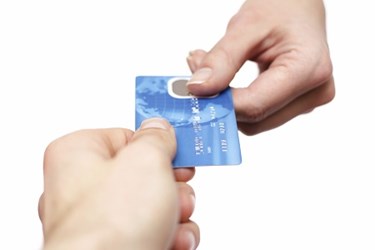Answers To 3 Real-Life Questions About Working EMV Solutions


As your merchant clients migrate to EMV and train employees on their new payment solutions, they are probably turning to you with problems they encounter or with questions on best practices. Discover Financial Services (DFS) has found its partners often are hearing the same questions as their merchant clients deploy EMV. Chris Englehardt, GM of integrated payments, and Gabriela, Loayza, VAR specialist for the Chip Center of Excellence at DFS, provided answers to some of these questions during a Retail Solutions Provider Association (RSPA) webinar “EMV — Implementation Best Practices.”
Englehardt pointed out your ability to help a merchant through the transition to EMV and to move past problems and concerns can further establish you as a trusted advisor with your client. Information from the webinar you can share with your clients includes how to handle hotel pre-authorizations, tips added to restaurant checks, Internet outages and offline approvals, and verifying a system is ready to accept chip cards. In addition, Englehardt and Loayza answered these three questions:
What’s The Difference Between Online PINs And Offline PINs?
Loayza said a feature of EMV technology is the ability to accept a PIN offline. With an offline PIN, the terminal prompts the consumer to enter a PIN, and the PIN is transmitted directly from the terminal for verification. This is opposed to online PINs where the terminal enciphers the PIN for inclusion in the authorization message. With offline PINs, explained Loayza, “You can validate chip cards between the terminal and the card. There is no need to send it to the issuer,” she explained.
Another card verification method (CVM) is signature; if this option is selected, there is no additional processing, but there may be a prompt for additional action by the merchant (i.e., comparing the signature to the back of the card).
Loayza said there is also the option not to require a CVM — which could be used in applications such as unattended terminals in parking garages. Chip-enabled terminals will still help combat fraud from counterfeit cards, said Loayza, but lost or stolen chip cards would not be protected. She also noted that DFS doesn’t require a PIN or signature for transactions less than 50 dollars, and she suggested confirming requirements with acquirers.
According to Loayza, it is a best practice to support all CVMs that the terminal and acquirer or processor allow.
If A Card Is Chip And PIN, But The Terminal Is Chip And Signature, Will The Transaction Go Through?
With some cards enabled for chip and PIN, there is often the question of whether those cards will work in terminals set for chip and signature. Loayza explained the transaction will work: Chip cards are set up with CVMs in a particular order. If PIN is the preferred method, but it is unavailable at a terminal, it will default to chip and signature. She again recommended that merchants support all CVMs — and she reminded VARs and ISVs there are additional certification requirements to accept PINs.
What Is Fall Back?
When a consumer attempts to pay with a chip card but a technical failure at the terminal prevents the transaction from being processed, this results in technical fallback. Loayza commented that true technical failure is very rare. She said, however, “We are seeing a lot of incorrect fallbacks.”
If merchants get the message “unknown AID (application identifier),” for example, this is not a fallback and the card should be processed as a magnetic stripe card. If merchants receive the message “blocked application” or “blocked card,” again this is not a fallback, but instead means the cardholder is over the card limit, is delinquent, or perhaps, the card has not been activated. In this case the merchant should not allow the consumer to swipe the card to complete the transaction.
The message “chip card error,” however, is a technical fall back, indicating there has been a failure in communication between the card and the terminal. Loayza says the terminal should prompt the consumer to swipe the card instead, and the transaction would have to be approved by the issuer.
For more answers to questions about implementing EMV, you can access the entire webinar on demand at http://www.gorspa.org/i4a/pages/index.cfm?pageID=3676. Also, visit RSPA EMV Central for more information on EMV.
Resources for VARs from Discover are available at http://www.discovernetwork.com/chip-card/vars/index.html.
